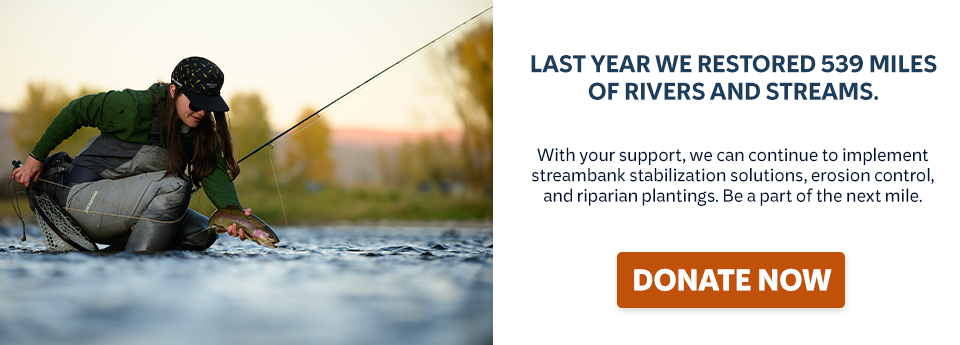Search results for “bear river watershed”
September 10, 2009 FOR IMMEDIATE RELEASE: CONTACT: Curtis Knight, California Trout 530-859-1872 Debra Anderson, McCloud Watershed Council 530-345-5603 Brian Johnson, Trout Unlimited 415-385-0796 Protect Our Waters Coalition Responds to Nestles Decision to Leave McCloud McCloud, CA. The Protect Our Waters Coalition today issued the response below to the announcement that Nestle has come to the…
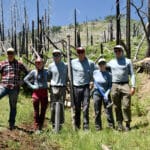
For its second summer, TU Expeditions has given high school and college students the chance to explore rivers, conservation and build the skills and confidence to become the next generation of river champions.
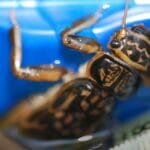
Regardless of how you see them, these harmless creatures have an important role in the riparian ecosystem. They break down leaves in streams to start the food chain, are food for trout, and can even indicate clean water.
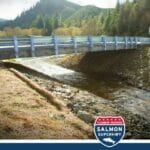
The Salmon SuperHwy has achieved more than 50 percent of its goal of restoring fish connectivity to 95 percent of historically available habitat across the Tillamook—Nestucca Sub-basin
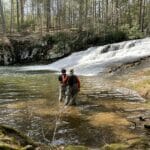
“But mitigation alone won’t be enough. TU’s continued support of programs and policies geared towards carbon reduction and climate change mitigation will be critical in keeping our coldwater fisheries of today, coldwater fisheries of tomorrow. Our practice of using sound science in decision making has made us among the most respected environmental organization in the nation – when TU speaks, decision makers listen. We’ll need to continue to flex our voices.”
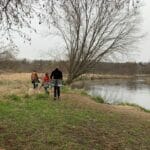
With planting bags slung over their shoulders, gloves and a specialized tree planting tool called a “hoedad” in hand, the Rogue River Tree Army descended toward the river. In just three weeks, 16,000 newly planted trees took root in their new home
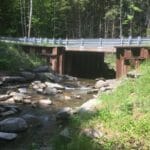
Trout Unlimited is applauding an ambitious New York stream restoration initiative included in a $3 billion proposal announced by Gov. Andrew Cuomo this week. The “Restore Mother Nature Bond Act” was highlighted in Cuomo’s 2020 State of the State address. It would fund projects that improve critical fish and wildlife habitat and reduce flood risks across New York by reconnecting streams, removing obsolete dams, retrofitting road-stream crossings, restoring wetlands and natural floodplains, conserving forests and open space, reducing stormwater runoff, and upgrading fish…
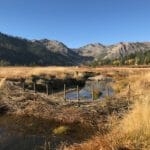
One of several BDAs (beaver dam analogues) recently installed in Squaw Creek to improve floodplain connectivity, among many other habitat benefits. By Tom Kloehn Trout Unlimited believes that conservation work begins with people. This belief was affirmed again when over 75 volunteers gathered recently to renew one of the Lake Tahoe region’s most popular places—Squaw…
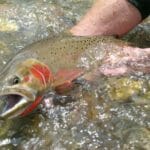
chalk_creek_bonneville.jpg A Chalk Creek native Bonneville cutthroat: Reconnected to spawning habitat FOR IMMEDIATE RELEASE Nov. 6, 2013 Contact: Paul Burnett, 801-436-4062 pburnett@tu.org Tim Hawkes, 801-928-9008 thawkes@tu.org Trout Unlimited, rancher boost fish habitat on Chalk Creek Project reconnects Weber River cutthroats with spawning habitat (Salt Lake City)The Weber River is home to one of Utahs most…
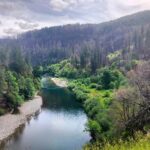
The Chetco River, one of the finest salmon and steelhead fisheries in the West. For more than a decade TU has worked with other fishing and conservation groups to protect coastal salmon and steelhead streams in southwest Oregon from mining and o ther types of resource development that could harm legendary fisheries such as the…

Jordan Fields recently connected with TU vice president for eastern conservation, Keith Curley, to talk about Fields’ work.
8/18/2004 TU Releases “Settled, Mined and Left Behind” Report TU Releases “Settled, Mined and Left Behind” Report Ten Western watersheds affected by pollution from abandoned mines profiled in report Contact: Tim Zink Manager, Media Relations Trout Unlimited 703.284.9427 8/18/2004 — Washington — The national conservation organization Trout Unlimited (TU) today released a report entitled Settled,…
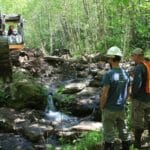
By Andy Brown Recent projects to remove in-stream barriers on two North Carolina streams have opened miles of habitat for trout and other creek-dwelling creatures. The work was completed on Powdermill and Cedar Rock creeks and is part of TU’s coldwater conservation program in the Southern Appalachians. Removing barriers helps fish, including native brook trout,…
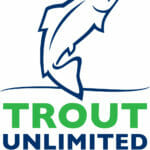
tu-logo-xl.jpg For Immediate Release September 17, 2018 Contact: Steve Moyer, smoyer@tu.org, (571) 274-0593Laura Ziemer, lziemer@tu.org, (406) 599-2606 Trout Unlimited Pleased by Gains, but Disappointed in Missed Opportunity in 2018 WRDA Washington, D.C.House Transportation and Infrastructure Committee Chairman Bill Shuster unveiled the 2018 Water Resources and Development Act (WRDA)out of conference committee, S. 3021, last week…

As a Trout Unlimited Business member from its first day, Black Dog Outdoor Sports used the opportunity of its Grand Opening to support a priority effort toward which many local TU chapters have committed countless hours and substantial funds – namely the Battenkill Home Rivers Initiative (HRI). The Battenkill HRI formally began in January 2020 and represents for Trout Unlimited a full commitment to restoring and sustaining the Battenkill watershed for current and future generations. Led by TU staffer Jacob Fetterman and supported by donations and volunteers from the New York Council and Clearwater, Adirondack, Home-Waters and Southwestern Vermont chapters, the Battenkill HRI employs an ecosystem-based approach to prioritize reconnection, restoration and protection throughout the watershed.

Notching a dam on Macedonia Brook in Connecticut has opened up an additional 2 miles of quality coldwater habitat for trout in the Housatonic River watershed. After years of planning, the Connecticut Department of Environmental Protection, the Housatonic Valley Association and Trout Unlimited removed parts of the old concrete dam on the Housatonic tributary on…
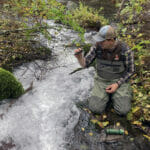
TU partners with NOAA to prioritize high-impact restoration projects in anticipation of salmon returning
We are kicking off a monthly series focusing on our work in the Upper Rio Grande basin. This post educates readers to the work that has been done, work that will be done and introduces us to partners and staff who are dedicated to making this initiative successful across TU’s Protect, Reconnect, Restore and Sustain…
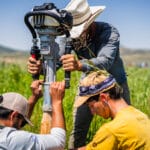
Colorado, Wyoming, New Mexico, Utah, and Tribal communities stand to receive substantial economic benefits for local conservation priorities
The Snake River has, by far, the greatest potential for wild fish recovery of any watershed in the Columbia Basin. Historically it produced about 40 percent of the spring/summer Chinook salmon and 55 percent of the summer steelhead in the Columbia system. Annual run estimates prior to the 1850s exceed two-million fish for all…

